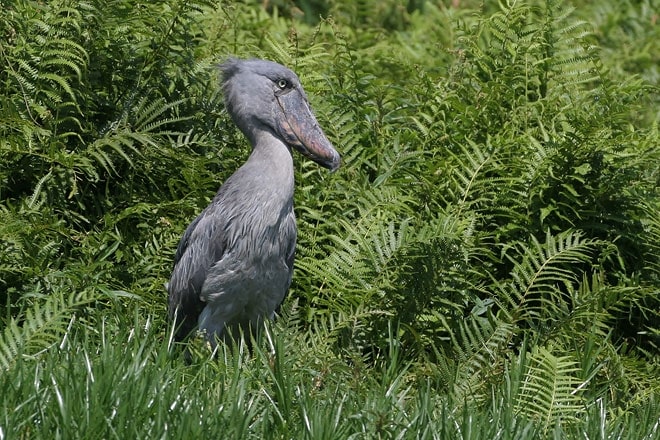A Family of One
Mar 26, 2011 | by Adrian Binns
While leading birding and wildlife tours around the globe, I am often asked about the quantity of bird species in the world, and far less so, the number of bird families. Ornithologists quibble over the exact numbers, but agree there are approximately 9700 species, comprised of 193 bird families.
An interesting fact is that there are 19 families that contain only 1 bird species. These species are so unique that they have no other close relatives. Of these 19 individuals, I have been fortunate enough to have seen 11 of them.
In Africa, I’ve seen extraordinary Shoebill (above) with its massive head and bill, Ostrich, Hoopoe, Hammerkop and Crab Plover. In the Americas, I’ve found Sunbittern, Oilbird and Bananaquit. Ibisbill is on my list from India.
Two of the 19 birds can be seen in the United States, where I’ve had good looks – Olive Warbler in Arizona, and Limpkin (above) in Florida, which specializes in eating apple snails. I am hoping to see the prehistoric looking Hoatzin during my upcoming trip to the Amazon Rainforest in Brazil, this August.
The remaining 7 are found in areas that I have yet to explore: Emu (Australia), Magpie-Goose (Australia), Kagu (New Caledonia), Cuckoo-Roller (Madagascar), Sapayoa (Panama, N SA), Bristlehead (Borneo), and Palmchat (Hispaniola, Dominician Republic).
Many of the 19 species of one-bird families can be seen on Wildside trips to those particular areas. Sign-up for your favorite trip today!
2 Comments
Leave a Comment
You must be logged in to post a comment.


































Oh my that Shoebill, what a magnificent looking bird. I am certain that I have seen it in images before, yet had forgotten. They remind me of the now gone forever Dodo birds in a way~
Mary, I believe that the Dodo was a similar colored bird with a thick bill. The rare Shoebill lives in papyrus swamps in eastern Africa, where they feed upon large fish such as lungfish. The Shoebill has an alternate name – Whale-headed Stork, though it is not related to storks. It is thought that pelicans may be their closest relatives.